#Reg Varney
Explore tagged Tumblr posts
Photo
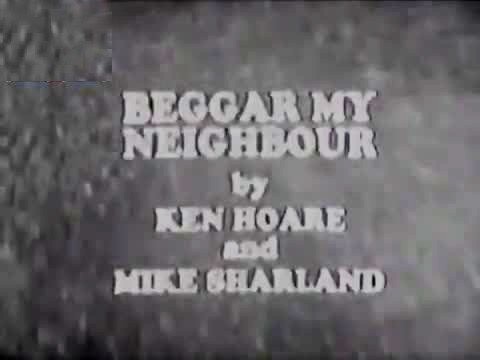

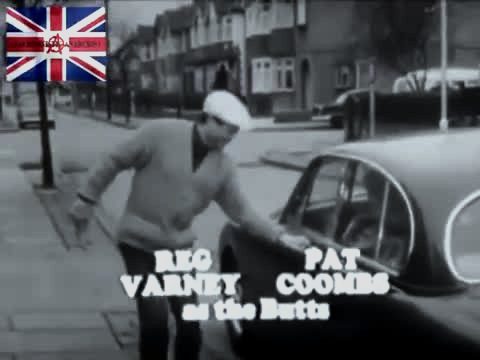
Beggar My Neighbor - BBC One - May 24, 1966 - March 26, 1968
Sitcom (23 episodes)
Running Time: 30 minutes
Stars:
Peter Jones as Gerald Garvey (pilot and series 1)
Desmond Walter-Ellis as Gerald Garvey (from series 2)
June Whitfield as Rose Garvey
Reg Varney as Harry Butt
Pat Coombs as Lana Butt
Rosemary Faith as Deidre Garvey (from series 2)
2 notes
·
View notes
Text
Thanks to @vintage-london-images for this cracking piece of London Transport history.
This is a clip from Rabbit and Snail Films, the makers of the documentary, On the Buses at the Movies, in which Reg Varney and Stephen Lewis recall their experiences on the Chiswick skidpan for the 1971 Hammer Films production of On the Buses.
youtube
Here we are at London Transports Aldenham Works testing a London Transport RT type bus for stability, and then later to the skid pan at Chiswick.
Opening in 1956 and replacing Chiswick as its main overhaul centre, in its heyday up to 50 buses a week were overhauled at Aldenham, and it was the most comprehensive bus overhaul operation in the world.
The post war standardisation and huge size of the London Transport fleet allowed maintenance along modern production line principles, with work being carried out on a number of buses at once. Several mechanics could focus on specific parts of the vehicle rather than a single mechanic working on a single bus at a time.
Please check out other posts with hashtag #video on @vintage-london-images
#london transport#public transport#chiswick#social history#working class history#on the buses#british culture#hammer films#reg varney#stephen lewis#london history#Youtube
46 notes
·
View notes
Text
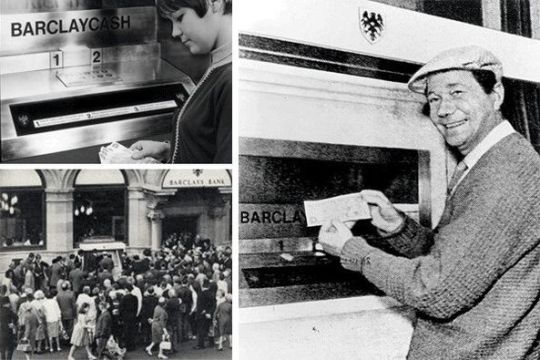
On June 27th 1967 the first cash dispenser was opened by Barclay’s Bank in Enfield by actor Reg Varney.
The idea of an automatic money dispensing machine had been mooted and tried without success in the early 60's but it wasn't until Scotsmen John Shepherd-Barron and James Goodfellow successfully designed the "cash machine" and Personal Identification Number (PIN) technology which is still used over 50 years later.
Goodfellow lodged his patent in May 1966, more than a year before the first cash machine was ceremonially opened in a blaze of publicity. A machine was developed by John Shepherd-Barron, who was born in India, to Scottish parents, and lived much of his later life in Portmahomack in Ross-shire.
Shepherd-Barron's ATM beat Goodfellow's machines, which were installed at branches of Westminster Bank (later to become NatWest), by just a month.
So Shepherd-Barron became known as the "man who invented the cash machine" and not Goodfellow, the man who patented the system we use today.
Shepherd-Barron says he was inspired by chocolate vending machines, he stated "It struck me there must be a way I could get my own money, anywhere in the world or the UK. I hit upon the idea of a chocolate bar dispenser, but replacing chocolate with cash.
The two devices were very different.
Shepherd-Barron's did not use plastic cards, instead it used cheques that were impregnated with carbon 14, a mildly radioactive substance.
The machine detected it, then matched the cheque against a Pin number.
Shepherd-Barron worked for banknote manufacturer De La Rue, which never patented its machine.
Before he died in 2010, he told a documentary that he didn't patent the idea because he did not want fraudsters knowing how the system worked.
He also said that the chief executive of Barclays had been quick to say yes to the idea when they had discussed it after a couple of Martinis.
Shepherd-Barron then had to go back to his team and get them to develop his idea.
In recent years, his claim to have been the real inventor of the cash machine has been recognised more widely.
Mr Goodfellow now does not like to talk about the years in which Mr Shepherd-Barron got all the credit but in a 2009 BBC documentary he said it "really does raise my blood pressure".
The engineer, from Paisley, told BBC Scotland: "My patent was licensed by all the manufacturers. They thought that was the way to go.
"The race to get it on to the street was not as important.
"Getting it right was the answer, not getting it first."
Mr Goodfellow was working as development engineer for Glasgow firm Kelvin Hughes in the mid-1960s when he got involved in a project to design a machine that could dispense money to customers when banks were closed.
He said in an interview that the driving force for the move was unions putting pressure on banks to close on Saturday mornings.
He said most people worked during the week and could not get to the bank, which closed at 3pm on weekdays.
Many people went to the bank on Saturday mornings but the unions were pressing for staff to work a five-day week.
The banks wanted a way to give working people access to their money when they were closed. Goodfellow said "The problem with cash machines was access.
"How would a genuine customer, and only a genuine customer, get money out of it?"
They considered biometrics - fingerprints, voice prints or retinal scans.
"But in the 60s the technology to do this was not there, it was impossible,"
So the next approach was an "exotic token", a piece of paper or plastic with "uncommon characteristics" that a machine would recognise.
His "eureka moment" came when he hit upon the idea of the Personal Identification Number (PIN).
This was the vital security measure that would make the system work, the number would be known to the customer and the bank and could be related to the card but not read by anyone else.
Goodfellow's invention was patented in May 1966, more than a year before his rival unveiled the first ATM in London.
But he still had a battle to make his concept reality.
"We had to meet some of the banks demands which were pretty severe," he said.
"They had a million customers and they wanted 2,000 machines across the UK.
"They wanted any one of the one million customers to be able to access any one of the 2,000 machines.
"You've got to remember there was no IT network in those days. The banks had no IT equipment. The bank's branches had nothing.
"We spent a lot of time developing the code. We had to submit something like 1,000 of these cards to a consultant, who would try to decipher it."
The cards he used were one quarter of a "Hollerith" punch-card, which just happens to be the same size as today's credit card. It contains just 30 bytes of data.
His patent for the card and Pin ATM was licensed for millions but Mr Goodfellow, as a humble technician, did not own the rights and did not get rich from his invention.
He said he signed patents for 15 countries around the world and got a dollar for each - worth about £10.
Mr Goodfellow left the firm in 1967 when it moved its operations to England and he went to work for IBM.
There have been arguments for years over who should officially go down in history as "the inventor of the ATM".
In 2005, Mr Shepherd-Barron received an OBE in the New Year honours list for services to banking as the "inventor of the automatic cash dispenser".
However, since then Mr Goodfellow, the man who patented the invention, has regained his place.
In 2006 Mr Goodfellow received an OBE for services to banking as "patentor of the personal identification number".
He has also been placed in the Scottish engineering hall of fame alongside John Logie Baird, the inventor of the television.
According to the ATM Industry Association (ATMIA), as of 2015, there were close to 3.5 million ATMs installed worldwide. However, the use of ATMs is gradually declining with the increase in cashless payment systems.
17 notes
·
View notes
Video
youtube
Olivia Newton-John - Take Me Home Country Roads (The Reg Varney Revue, D...
1 note
·
View note
Text
What is Atm and how does Atm works?
Introduction:
ATM: Automated Teller Machine
ATM stands for Automated Teller Machine. ATM is an electro-mechanical machine that is used for making financial transactions from a bank account. These machines are used to withdraw money from personal bank accounts.
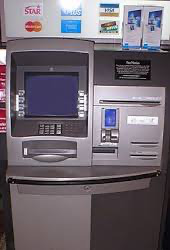
Basic ATM Parts
The ATM is a user-friendly machine. It features various input and output devices to enable people easily withdraw or deposit money. The basic input and output devices of an ATM are given below:
Input Devices:
· Card Reader: This input device reads the data of the card, which is stored in the magnetic strip on the back side of the ATM card. When the card is swiped or inserted into the given space, the card reader captures the account details and passes them to the server. Based on account details and the commands received from the user, the server allows the cash dispenser to dispense the cash.
· Keypad: It helps the user to provide the details asked by the machine-like personal identification number, amount of cash, receipt required or not, etc. The PIN number is sent in encrypted form to the server.
Output Devices:
· Speaker: It is provided in the ATM to produce the audio feedback when a key is pressed.
· Display Screen: It displays the transaction-related information on the screen. It shows the steps of cash withdrawal one by one in sequence. It can be a CRT screen or an LCD screen.
· Receipt Printer: It provides you with the receipt with details of transactions printed on it. It tells you the date and time of the transaction, the withdrawal amount, the balance, etc.
· Cash Dispenser: It is the main output device of the ATM as it dispenses the cash. The high-precision sensors provided in the ATM allow the cash dispenser to dispense the correct amount of cash as required by the user.
How ATM works
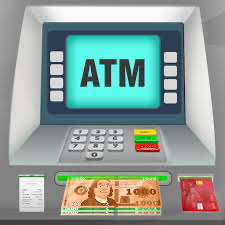
What ATM does
Now a day, ATMs have a lot of functionalities along with their basic use of cash dispensing. Some of them are:
· Cash and cheque deposit
· Fund transfer
· Cash withdrawal and balance inquiry
· PIN change and mini statement
· Bill payments and mobile recharge etc.
· The first ATM was used to dispense cash for customers by a Chemical bank in New York (USA) in 1969.
ATM deposits are also growing in popularity. If their bank permits it, account customers can deposit money and checks.
Important/Interesting Facts about ATM
Inventor of ATM: John Shepherd Barron.
· ATM Pin Number: John Shepherd Barron thought to keep a 6 digits PIN for the ATM, but it was not easy for his wife to remember a 6 digits pin, so he decided to prepare a 4-digit ATP PIN.
· World’s first floating ATM: State Bank of India (Kerala).
· First ATM in India: Installed by HSBC (Hongkong and Shanghai Banking Corporation) in 1987.
· First ATM in the World: It was installed on 27 June 1967, at the Barclays Bank of London.
· First Person to use ATM: The famous comedy actor Reg Varney was the first person to withdraw cash from the ATM.
· ATM without an Account: In Romania, which is a European country, one can withdraw money from an ATM without having a bank account.
· Biometric ATM: Biometric ATM is used in Brazil. As the name suggests, the user is required to scan his or her fingers at these ATMs before withdrawing money.
· World’s Highest ATM: It is installed in Nathu-La mainly for army personnel. Its height is 14,300 feet above sea level and is operated by the Union Bank of India.
Limits on ATM withdrawals
Banks have restrictions on the amount of money you can withdraw from an ATM each day, as we have already indicated. Put your hand or some other body part as a cover so nobody can see you type your PIN. This can help prevent fraud. Additionally, since each ATM can only hold a certain amount of money, capping the amount per withdrawal enables the bank to control the movement of cash.
Place and Security
Using ATMs that are situated in well-lit public areas is one way to prevent being a victim of crime when doing so. When you get your money, do not count it at the ATM; instead, wait until you are in a more private setting, like your car.
Conclusion :
The ATM is very important nowadays to use it is time-saving and u can withdraw the money as per your requirement. ATM can give you instant money as per your requirement.
0 notes
Text

"Why don't you become a clippy?" Clippy was a slang term for a bus conductor and came from the ticket clipping machine they carried.
On The Buses was a London Weekend Television sitcom, created by Ronald Chesney and Ronald Wolfe, that aired from 28 February 1969 to 20 May 1973 in the UK. Pictured are:
Reg Varney (1916-2008) as Stan Butler. Reg had also starred in The Rag Trade, broadcast 1961-1963, which had also been created by Chesney and Wolfe.
Stephen Lewis (1926-2015) as Inspector Cyril Blake or "Blakey". He came up with the show's catchphrase "I 'ate you Butler" himself and, when touring as an actor, was known to visit local bus depots in character as Blakey and shout at staff.
Bob Grant (14 April 1932 - 8 November 2003) as Jack Harper.
Anna Karen (1936-2022) as Olive Rudge (Stan's sister).
The other main cast were Michael Robbins as Arthur Rudge and Cicely Courtneidge and Doris Hare who both played Stan's mum, Mabel.
Three movies were made - On The Buses, Mutiny on the Buses and Holiday on the Buses.
For the true anoraks out there the bus shown above is a Bristol Lodekka (the name coming from it having a lower overall height than the standard double-decker bus).
#on the buses#reg varney#stephen lewis#bob grant#anna karen#luxton and district motor traction company#28feb#20may#bristol lodekka#ronald chesney#ronald wolfe#14apr
23 notes
·
View notes
Text


Jeanne Varney (daughter of star Reg Varney) had a brief cameo in the first of the On the Buses spinoff feature films in 1971.
It was the most successful of the sitcom-feature film spinoffs, the location shots were done 'guerrilla style' with cast, crew and equipment transported on the bus used for the scenes, and it was brought in for under 100 000 pounds. It went on to make back around 28 times its budget for Hammer Films and EMI Studios.
10 notes
·
View notes
Text
On the Buses at the Movies: Clips, Update & Stephen Lewis Tribute
On the Buses at the Movies: Clips, Update & Stephen Lewis Tribute
Here’s an update on the production of our upcoming documentary On the Buses at the Movies, including clips featuring Reg Varney, Stephen Lewis, Anna Karen, Ronald Wolfe and Ronald Chesney, as well as an extract from our interview with Morris Bright. Continue reading
youtube
View On WordPress
#Anna Karen#Blakey#Bob Grant#Dean Sullivan#Doris Hare#films#Holiday on the Buses#Inspector Blake#Jack#Michael Robbins#Morris Bright#Mutiny on the Buses#Olive#On the Buses#Reg Varney#Ronald Chesney#Ronald Wolfe#Stan Butler#Stephen Lewis#Youtube
0 notes
Photo

TVTimes Anglia, 21-27 November 1970: Reg Varney
5 notes
·
View notes
Photo

The Rag Trade - First Run - BBC - October 6, 1961 - March 30, 1963 / Second Run - ITV - September 11, 1977 - October 20, 1978
Sitcom ( 36 episodes - first run / 22 episodes - second run)
Runnning Time: 30 minutes
Stars:
First Run
Peter Jones as Harold Fenner
Miriam Karlin as Paddy Fleming
Reg Varney as Reg Turner
Esma Cannon as Lily Swann (series 1–2)
Sheila Hancock as Carole Taylor (series 1–2)
Barbara Windsor as Gloria (series 1) and Judy (series 3)
Ann Beach as Brenda (series 1)
Rita Smythe as Rita (series 1)
Wanda Ventham as Shirley (series 2–3)
Patricia Denys as Betty (series 3)
Stella Tanner as Olive (series 3)
Carmel Cryan as Gloria (series 3)
Amanda Reiss as Janet (series 3)
Irene Handl as Mrs Turner (series 3)
Second Run
Peter Jones as Harold Fenner
Miriam Karlin as Paddy Fleming
Anna Karen as Olive Rudge
Christopher Beeny as Tony
Gillian Taylforth as Lyn
Diane Langton as Kathy
Deddie Davies as Mabel
Lucita Lijertwood as Jojo
Rowena Cooper as Mrs Fenner (series 1)
Joy Stewart as Mrs Fenner (series 2)
#The Rag Trade#TV#Sitcom#BBC#ITV#1960's#1970's#Peter Jones#Miriam Karlin#Reg Varney#Esma Cannon#Sheila Hancock
2 notes
·
View notes
Photo

British comedy actor Reg Varney becomes the first person in the world to withdraw cash from an ATM at Barclays Bank, Enfield, London on June 27th 1967. [256x197] Check this blog!
9 notes
·
View notes
Photo

British comedy actor Reg Varney becomes the first person in the world to withdraw cash from an ATM at Barclays Bank, Enfield, London on June 27th 1967. [256x197] via /r/HistoryPorn https://ift.tt/2wzEVa1
2 notes
·
View notes
Text


On June 27th 1967 the first cash dispenser was opened by Barclay’s Bank in Enfield by actor Reg Varney.
The original ATM was the brainchild of John Shepherd-Barron, from Inverness, who arrived at his local branch just as it was closing one day.
While soaking in a bath, he struck upon an alternative means of accessing his money, imagining a machine similar to chocolate dispensers.
Over a pink gin, he convinced Barclays that his vision was viable. Within two years, history was made at the Enfield branch, with the new machine allowing customers to withdraw as much as £10 a time. It was, its inventor would later recall, “quite enough for a wild weekend.”
Mr Shepherd-Barron died in 2010 at the age of 84. While he was long regarded as the father of the ATM, another Scot, James Goodfellow, can also lay claim to the title.
The Paisley native unveiled his iteration of the ATM the same year at Mr Shepherd-Barron. Crucially, his was patented 12 months earlier, and was the first to use a card and PIN code system. A few years ago, he revealed he made around £10 from the patent, and has not made a penny more since.
Despite the rise in other new technologies, such as online and mobile banking, the ATM remains popular. While consumers are no longer reliant on hard cash to pay for goods, trade association Payments UK has said its forecast did not envisage the demise of money, as even in 10 years, it is still expected to make up around a fifth (21%) of all payments.
According to the ATM Industry Association (ATMIA), as of 2015, there were close to 3.5 million ATMs installed worldwide. However, the use of ATMs is gradually declining with the increase in cashless payment systems, how many of us just tap our cards, or our phones when paying for something when we are out and about?
15 notes
·
View notes
Photo



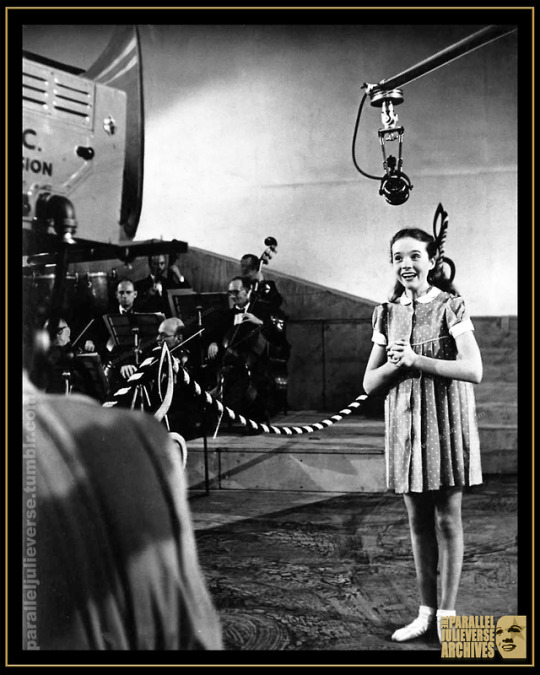

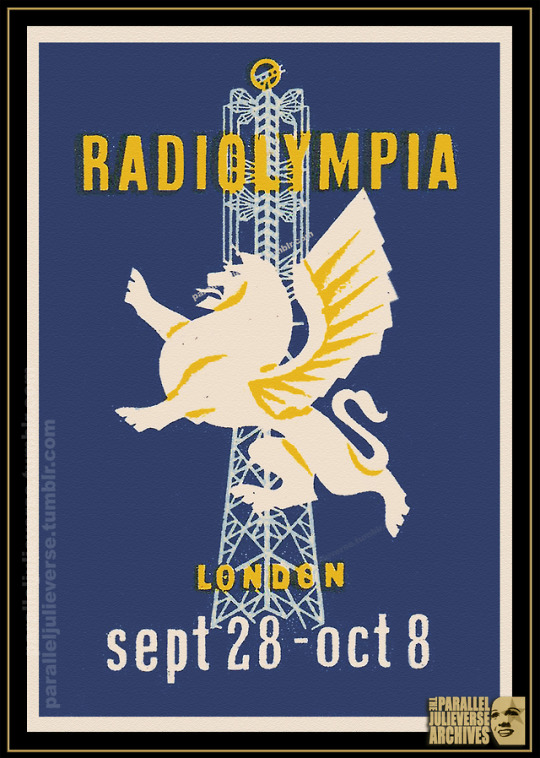
This Week in Julie-history: Julie Andrews makes her solo television debut on 8 October 1949
Seventy years ago, the young Julie Andrews realised another major milestone in her budding career when she made her first solo television appearance in a special live broadcast of Radiolympia Showtime on October 8, 1949.*
At the time, British television was still in its infancy and Radiolympia –– an annual trade show held at the sprawling Olympia exhibition centre in London –– was a major showcase for the new medium (Law, p. 49ff). The 1936 Radiolympia was where the BBC first launched its TV services to the British public and, by 1938, “television was the main feature of the show” (Briggs 1975, p. 537). The outbreak of war in 1939 saw Radiolympia -- as, indeed, the rollout of television -- put on hold for almost a decade. When the show returned in 1947 it “broke all attendance records” with over 450,000 admissions as the postwar British public clamoured for the sense of promissory modernity represented by television and the entertainment broadcast media (Briggs 1979, p. 201).
By the time of the 1949 Radiolympia, an estimated 200,000 British households had a television set with new licenses selling at the rate of 1,000 units per day––an impressive uptake given TV service was still limited to the greater London area (Hilmes, 31). The country was, however, poised to get its first regional relay transmitter near Birmingham in December of that year, bringing TV to a potential new market of 8.5 million viewers across the populous Midlands (Pawley, 366). Consequently, the 1949 Radiolympia shaped up as “[b]iggest drive ever to sell TV to the public” with "every known trick ...employed to glamorize this new entertainment medium” (“British Launching”, 17).
A key attraction provided by the BBC at the 1949 trade fair was a massive television studio –– the biggest in the word, reportedly (Allister, 334) –– overlooked by a glass encased gallery where audiences could “watch rehearsals as well as transmitted performances” (“British Launching”, 17). Dubbed “television’s big shop window”, the BBC studio at Radiolymia hosted an enticing cavalcade of entertainment across the 12 days of the show with everything from fashion parades and cooking shows to dramatic teleplays, ice revues, and even a grand ballet (”The Scanner”, 21) . Inevitably, ‘variety shows’ formed a key element of the line-up with nightly tentpole specials scheduled for the all-important 8:00p.m. slot. These variety programmes showcased a range of acts drawn from across British and even European entertainment, including many performers who loomed large in Julie’s early career such as Pat Kirkwood, Richard Hearne, Peter Brough and Archie Andrews.
The biggest and best variety special was earmarked for the exhibition’s closing night on Saturday 8 October. Titled Radiolympia Showtime, it was all-out star-studded spectacular, hosted by popular radio personality, Wilfred Pickles, and featuring top talent names of the era such as wartime singing sweetheart, Vera Lynn, comedians Leslie Henson and Reg Varney, jazz trumpeter Kenny Baker, beloved music hall comic–– and Julie’s future stage 'Dad’––Stanley Holloway...and, making her solo TV debut, Britain’s ‘prima donna in pigtails’, Julie Andrews.*
Backed by the BBC orchestra under the direction of conductor, Eric Robinson, Julie sang two songs: her juvenile signature aria, the ‘Polonaise’ from Mignon and “I Heard a Robin Singing”, a number she had performed in the earlier Christmas panto, Humpty Dumpty at the London Casino. Given the embryonic status of TV at the time, there wasn't yet an established culture of TV reviews and most press coverage of the show, as of all the broadcasts from Radiolympia, focussed largely on technology and production aspects rather than broadcast content (Madden 1949). The Sketch called Radiolympia Showtime “a large scale spectacle on music hall lines” (Allister, 334), while the Daily Mail noted that “the baby of the show, Julie Andrews, treated audiences to some beautiful singing” (“Last Night”, 4).
It is not known if any record of Julie’s performance in Radiolympia Showtime exists. As a live emission, the broadcast wouldn’t have been recorded as a matter of course but, given its historical significance, it very well may have been filmed either “on set” or as a kinescope. The Library of Congress in Washington, D.C. has a catalogue entry in its film holdings for Radiolympia Showtime (1949) which seems to feature "segments” from the show ––Kenny Baker is listed, for example –– but, whether or not, Julie’s performance is included is unclear. We can but live in hope...
Notes:
* While Radiolympia Showtime was certainly a major step up the career ladder for Julie and helped launch what would become a long association with television, it wasn’t in fact her very first appearance on the small screen. A year earlier, Julie performed on an another BBC variety special, Rooftop Rendezvous on 27 November 1948 (“Rooftop”, 27). For that performance, Julie was billed alongside parents, Ted and Barbara Andrews, so Showtime marked her solo TV debut.
Sources:
Allister, Ray. “Television.” The Sketch. 12 October 1949: 334-35.
Briggs, Asa. The History of Broadcasting in the United Kingdom: Volume II: The Golden Age of Wireless. Oxford: Oxford University Press, 1975.
__________. The History of Broadcasting in the United Kingdom: Volume IV: Sound and Vision. Oxford: Oxford University Press, 1979.
“British Launching Drive to Sell TV to Public Via Olympic Exhibit.” Variety. 14 September 1949: 17.
“Highlights at Radiolympia.” Radio Times. 2-8 October, 1949: 40.
Hilmes, Michele. The Television History Book. London: BFI, 2003.
“Last Night.” Daily Mail. 9 October 1949: 4.
Law, Michael J. 1938: Modern Britain: Social Change and Visions of the Future. London: Bloomsbury Academic, 2018.
Madden, Cecil. “Television Close-Up.” The Sketch. 12 October 1949: 336-37.
Pawley, Edward. BBC Engineering 1922 - 1972, London: BBC, 1972.
“Radiolympia Showtime.” Programme Listing. Radio Times. 2-8 October, 1949: 43.
“Rooftop Rendezvous.” Programme Listing. Radio Times. 21-27 November, 1948: 21.
“The Scanner: Radiolympia is Television’s ‘Big Shop Window’”, Radio Times. 25 September-1 October, 1949: 44-45.
Copyright © Brett Farmer 2019
#julie andrews#television#debut#1949#70th Anniversary#bbc#showtime#radiolympia#london#united kingdom#star
11 notes
·
View notes
Photo

The Best Pair Of Legs In The Business ~ 1973
1 note
·
View note
Text



Remembering Reg Varney, who passed away November 16th, 2008, aged 92.
He was born in Canning Town, London, and having served in the Royal Engineers in World War Two, including tours in forces entertainment, he forged a career as variety artist on the tough club and music hall circuit, working with a young Benny Hill as his straight man.
By the 1960s he was also working in television, including the sitcoms The Rag Trade and Beggar My Neighbour. He also headlined a BBC anthology comedy series, The Valiant Varneys, in which he played a different character each week, but there are believed to be no surviving episodes as a result of the BBC policy at that time of keeping only limited archives.
He played a dramatic role in The Best Pair of Legs in the Business, a Yorkshire Television play and later an unsuccessful feature film, about a failing holiday camp entertainer, and finally gained international, lasting stardom, aged 52, as Stan in On The Buses.
He was also a talented fine artist.


Believe it or not, these three sex symbols were amongst the top box office stars in the UK, in 1971.
The first spinoff feature film from the sitcom, On the Buses, which had been initially rejected by the BBC and found a home at ITV franchise holder London Weekend, made back around 28 times its budget (which was less than 100 000 pounds), and was #2 at the UK box office that year.
It also famously out-grossed the year's James Bond offering , Diamond's Are Forever, however in all fairness the Bond film wasn't released until the very end of the year.
#reg varney#on the buses#british television#british actors#british cinema#music hall#social history#variety#british culture#art
23 notes
·
View notes